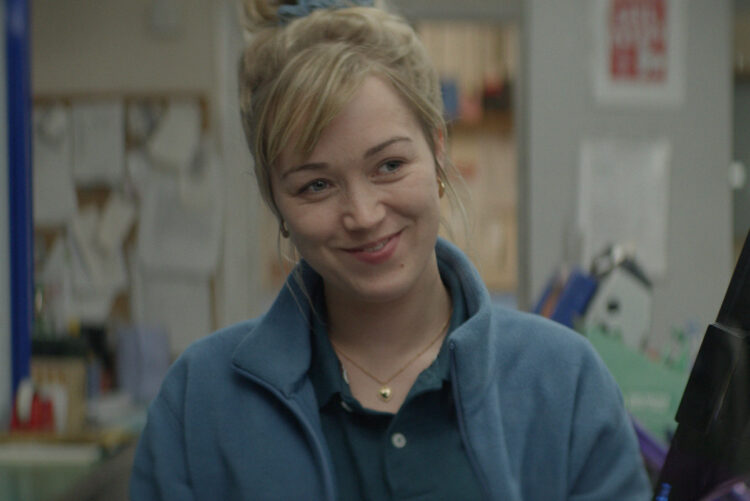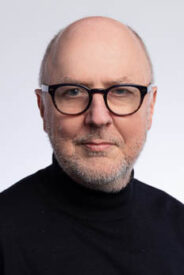TV needs more focus and investment to maximise its unrivalled strength

Opinion
TV has even more potential in the internet age. But it can’t cover all the bases without some very significant investment.
On 9 March, 1980 I climbed the stairs of the offices of Chris Ingram Associates and began my journey through the advertising industry.
It was my first day as a trainee TV buyer and, like most people on the first day of a new job, I was apprehensive and rather naïve, but eventually I got the hang of it.
We only had one channel to buy (ITV) and it stopped broadcasting at 10.30pm. Channel 4 didn’t arrive until two years later. TV in those days wasn’t exactly hard to plan or buy but writing down ‘options’ from Border TV filled the time nicely before long lunches, followed by filling in punch cards for Tempo, the computerised booking system.
The only advantage of old (er) age is the perspective it affords and the ability to assess progress or its absence.
A lot has changed in 43 years and nearly everything in life is far better now (with the rather topical exception of many politicians).
And television is a good example of progress. There is a lot more of it and the quality of programming has never been higher. With so much available, there is bound to be a high variation of ‘quality’, but everyone’s definition of what that word means will be different.
I wouldn’t watch I’m a Celebrity…, Bake Off or Strictly unless I was forced, and yet they were the most popular programmes on ITV, Channel 4 and the BBC last year.
The strength of today’s programme-making is a product of a much more fluid and competitive market, with successful formats being imported and exported freely and talent is at a premium.
We need lasers amid the chaos
Meanwhile, TV is still the most effective advertising medium known to mankind and the only one that has helped build thousands of brands, products and services. Any nascent business that wants to drive demand aspires to using it.
In the 80s we talked about the power of moving pictures and sound (yes, we really were that basic) and although the language has changed a lot, TV still begets unrivalled fame and ‘mental availability’. Back then we just talked about “awareness”, and that covered most of the bases. Absolute reach is still the best way to drive volume, of course, even if it’s harder to get.
It was interesting to watch last week’s Thinkbox seminar on the current state of TV, with two great presentations from Matt Hill of Thinkbox and Tom Harrington of Enders Analysis. The blizzard of acronyms (BVOD, SVOD, OLV, AVOD, FAST) alone demonstrates how much the industry has progressed but also how much resource is needed to deal with the sprawling complexity of today’s market, even before we get to the equally interesting Connected TV.
It has become fashionable for the panoply of options for ‘non-static’ content to be bracketed together as ‘AV’, with planning (if not always buying) conducted across all the supposedly relevant channels, including short-form video on social channels.
While this makes some sense, it may sell short the need to provide the deep-seated expertise that each of the different types of ‘AV’ need.
The splintering of viewership among many video options requires delicate handling. Thinkbox talks about ‘TV’s hidden value’ as detailed in this graphic:

All of this is undoubtedly true for broadcast TV, but virtually none of it is true of ‘online TV’, whether that be BVOD, YouTube, or short-form social ads.
Digitally-delivered video advertising suffers from many of the shortcomings of other online advertising and especially in attention levels, as amply demonstrated by Lumen Research and Amplified Intelligence. It’s plain common sense that a great 30-second TV commercial in a big programme on a mainstream TV channel should not be compared to a six-second ‘blipvert’ (to use an old word) on a mobile phone.
In this chaotic environment advertisers should invest more in the most powerful communications medium but when they do they should be laser-focussed on the why and how of each strand.
Who are you really looking for?
My first recommendation for advertisers is to be really clear on what kind of ‘AV’ you are planning and seek true specialist expertise in each.
Broadcast TV and BVOD, especially when planned and bought together, require specific expertise to navigate through the dynamic changes in viewing and attention levels by type of viewer, and AVOD is now a factor with Netflix, ITVX, Disney+ and Discovery+ adding to the complexity for advertisers.
All of this requires great skill, even before Online Video options are added to the mix. These also require specific expertise given the potential challenges they present, such as skippability, low viewability and bot traffic (remembering that 50% of all internet traffic is non-human). Deeper analysis of ad fraud is required to measure true leakage.
Some advertisers have developed models for measuring incremental reach across Broadcast TV, BVOD and Online Video, but as Ebiquity’s Mind the Gap study showed in 2020, great care should be taken in comparing apples with oranges, especially with AVOD now adding another fruit to the mix.
Now let’s add in Connected/Addressable TV. While this is not as advanced in the UK as in the US, it plays a growing role given its potential power of allying some of the attributes of Broadcast TV with the much-vaunted targetability and interactivity of online advertising.
Let’s not get carried away yet, though, as online advertising is hardly a paragon of how to get things right, and it’s worth noting that ad fraud is a major problem in the US CTV business. The targeting capability of online advertising has long been over-sold, especially outside of the Walled Gardens, and with cookies disappearing, accurate addressability is not guaranteed.
CTV requires a high degree of care to harness its undoubted potential to deliver the best of both worlds in an era where advertising and e-commerce have converged. Selling off the screen becomes even more powerful with the strongest branding medium behind it.
A lot rests on the advertiser’s ability to manage a vast quantity of research and data through the kind of data science skills that are now essential. No doubt Artificial Intelligence will provide answers in this area and be seen as a blessing for the advertising industry.
Advertisers should ensure they have true depth of expertise embedded in their operational structures to ensure the right approach to each of the different strands of the most profitable medium. This means in-house resource as well as the best specialist advice from media agencies and independent experts, such as the better ‘auditors’.
A planning-first approach
My second recommendation is that advertisers should concentrate on planning first and then execution.
Does this sound too obvious? Well, usually, yes but this is TV, where buying factors have unduly influenced planning for decades.
While some progress has been made, the mechanics of TV trading are still rooted in the 1990s, with share deals and CRR still a factor long after their sell-by date.
Meanwhile, BVOD is traded on the metrics of online advertising that are equally unsophisticated and open to distortion. Change is long overdue but the vested interests of the agency groups are too powerful for this to happen.
Advertisers should be clear-eyed on where the current TV trading processes benefit them and where they don’t. If their ideal plan doesn’t fit the media agency model, that isn’t a problem for the advertiser, it’s for the agency to fix.
Cost sometimes plays too dominant a role in decisions involving TV. Sometimes paying more yields disproportionately good results in a medium that produces such positive ROI. Advertisers should model out different scenarios across the channel mix and invest in broadcast channels that deliver the all-important reach, if that is their aim.
Delivering a pitch-led cost guarantee with a more premium mix of channels is another problem for the agency, not the client.
TV is a complex medium that rewards great planning. Advertisers should invest disproportionately in planning resources (people, tools, research) while setting realistic but challenging cost-effectiveness targets that reward the agencies for outstanding performance across both planning and execution.
Content is king but need not cost a fortune
Thirdly, but most importantly, content is king and great TV advertising is still the most sure-fire route to success.
And it doesn’t have to cost a fortune. The recent campaign for Cadbury’s Dairy Milk is a great example of story-telling at low cost and you can bet that the McDonald’s ‘arches’ campaign will resonate in workplaces across the land way beyond its cost.
The days of multi-million pound ads may be over, but true creativity is still the most significant contributor to success and the art of advertising is still dominant in these data- and AI-enabled days.
It goes without saying that the different strands of TV (or ‘AV’ if you insist) advertising require different creative approaches in just the same way that they demand different planning and buying techniques. That’s why specialisation is needed across the entire discipline. Creative agencies are investing in the relevant skills in TikTok, for example.
The contribution to ROI of creativity can and should be measured alongside the role of each medium. Advertisers should measure the whole mix and invest accordingly.
One issue is that TV’s absolute reach has reduced, especially for younger audiences, so advertisers may be inclined to spend less on airtime and also on the infrastructure of TV.
All of the above costs money, of course, but to scrimp on these essential elements is a false economy. We live in an age when cost-efficiency trumps cost-effectiveness, and too many advertisers fall into the trap of confusing the two.
At a time when media has become extraordinarily sophisticated and requires a high level of skill, advertisers have chosen to reduce their investment in the skills and tools needed. This just doesn’t make business sense.
Television advertising now carries as much potential for success as it did when I set out on my own journey in 1980. The main difference is that it now requires a very high level of expertise, tools and techniques to maximise its potential.
Yes, some of TV’s raw power has been eroded, but with the right strategy, approach, people and tools, TV still has the strength to transform businesses when handled correctly.
Wise advertisers will recognise this and act accordingly.
 Nick Manning is the co-founder of Manning Gottlieb Media (now MGOMD) and was CSO at Ebiquity for over a decade. He now owns a mentoring business, Encyclomedia, offering strategic advice to companies in the media and advertising industry. He writes for The Media Leader each month — read his articles here.
Nick Manning is the co-founder of Manning Gottlieb Media (now MGOMD) and was CSO at Ebiquity for over a decade. He now owns a mentoring business, Encyclomedia, offering strategic advice to companies in the media and advertising industry. He writes for The Media Leader each month — read his articles here.



